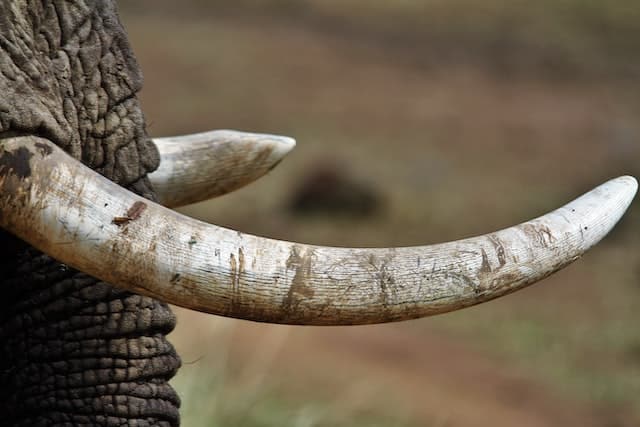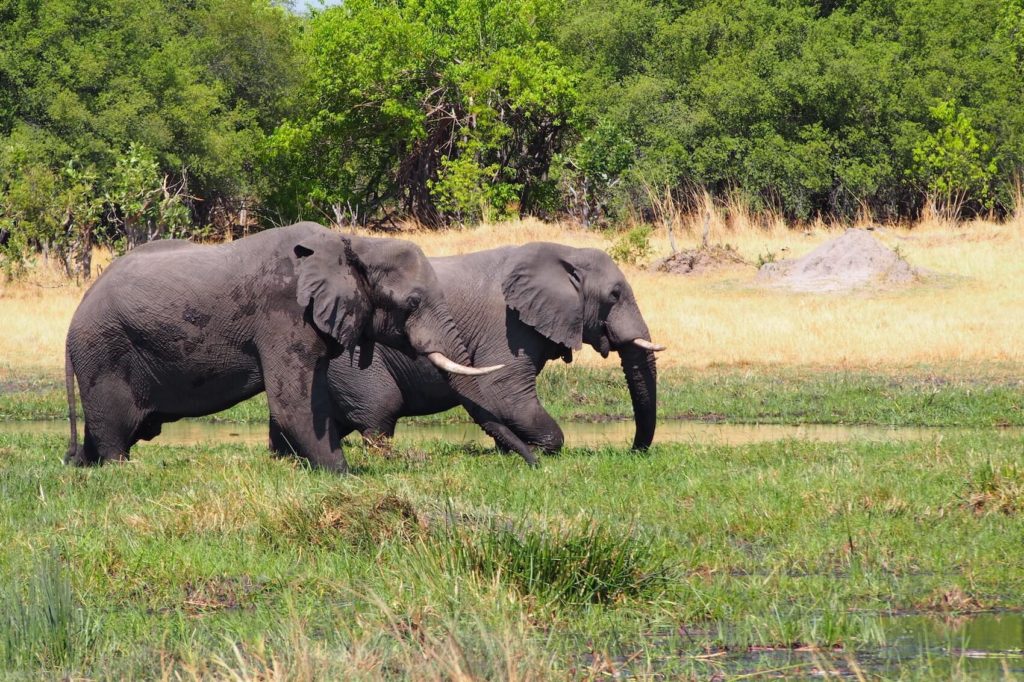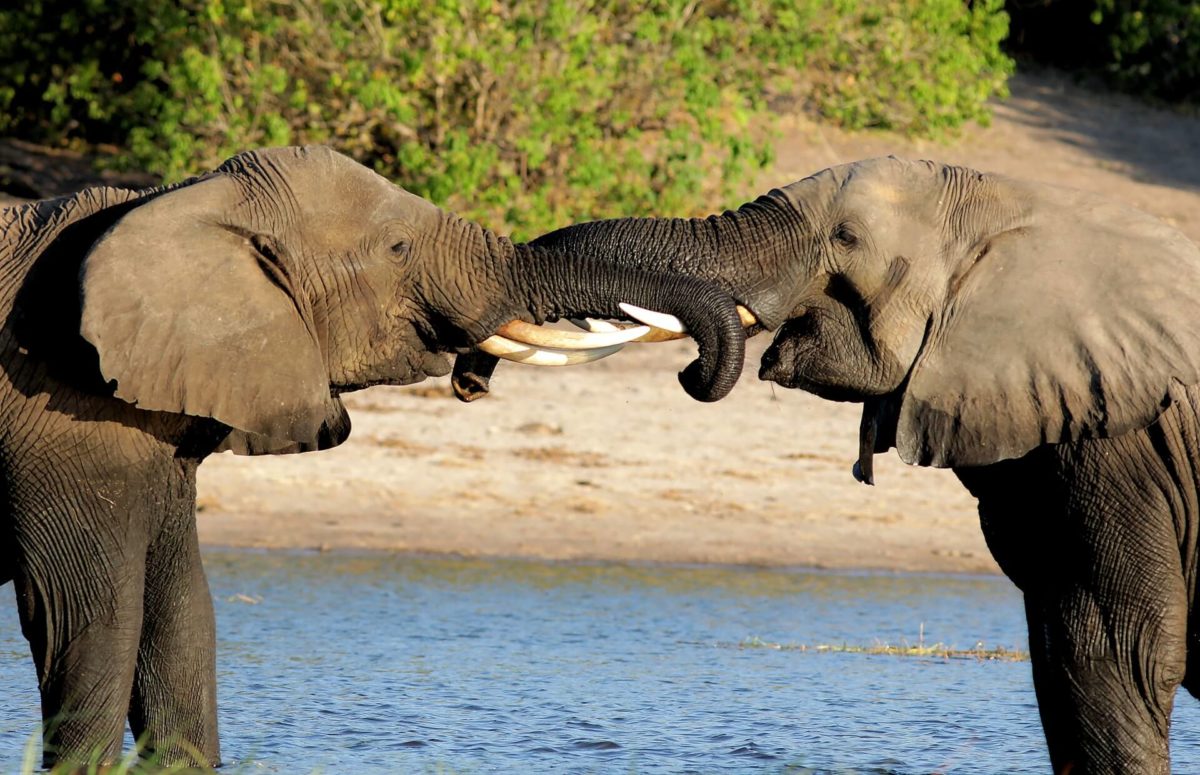Elephants are awe-inspiring animals, and their tusks instantly come to mind when you think of them. These majestic ivory structures often grace pictures featuring this incredible creature and provide a unique charm that furthers its dignified look.
But what is the purpose of these tusks? How long can they grow? And do all elephants have them?
Uncover the mysteries of elephant tusks by diving into this article! Here you’ll learn their purpose, size, growth tendencies, and even investigate the contentious issue behind ivory trading.
So, if you’re curious about these fascinating appendages and the animals that wield them, keep reading to discover more!
What is an elephant with tusks called?
An elephant with tusks is called a bull. A female elephant without tusks is called a cow, and a baby elephant is called a calf.

What is the purpose of the elephant’s tusks?
They are used for digging, moving objects around (such as destroying trees), and sometimes in elephant fights. They can also be used to strip bark off of trees or swish away flies.
Elephant tusks are also used in culture. For example, in some parts of Africa, it is believed that the elephant with the longest tusks is the most powerful and respected member of the herd.
Tusks can also be a sign of dominance or even add aggression within a herd when some bulls want to show their leadership. Read more about elephant herds.
How long can tusks be?
The elephant’s tusks can be up to 6-10 feet long, and elephant’s that have them are able to use them as weapons. They can weigh up to 200 pounds!
What’s a “Big Tusker” elephant?
A elephant with tusks that weigh over 100 lbs or where the tusks scrape the ground is called a “Big Tusker.” Only about one percent of elephant bulls are Big Tuskers.
The most famous Big Tusker
Satao (1968-2014) was a large African elephant from Kenya. His tusks were dubbed “giant tuskers” because they reached nearly to the ground.
On May 30, 2014, the Tsavo Trust announced that Satao had been slain by poachers using a poisoned arrow.
What do elephants use their tusks for?
Elephants use their tusks for a variety of purposes, including digging for water and roots, stripping bark off trees, and defending themselves against predators or other elephants.
During mating season, male elephants frequently use their tusks to duel with other males and establish authority. Furthermore, female elephants also rely on their tusks for protection of their offspring from threats.
Do some elephants not have tusks?
Not all elephants have tusks. Scientists have noticed female elephants in Mozambique that are emerging without tusks. The demand for elephant ivory has been driven by both the international market and poaching.
During the Mozambican Civil War (1977-1992), poachers boosted their activity to support war efforts. Elephant population sizes decreased dramatically. Female elephants lacking tusks were more likely to pass on tusklessness genes.
Can elephant survive without tusks?
Elephants are able to survive without tusks. If elephant bulls do not have tusks, they may still be able to mate successfully because the size of their heads is a good predictor for success in elephant fights.
There’s also the chance for a tuskless elephant to have an increased chance of surviving poachers.
Can elephant tusks grow back?
Elephant tusks can grow back, but they can be replaced. As the elephant ages and loses its teeth, a new tooth is growing in to replace it.
This process takes two years for baby elephants and around four years for adults. Elephant’s tusks can grow as fast as an inch per year.
Can elephants be born without tusks?
The gene that causes female elephants to be born without tusks is passed down from generation to generation.
This mutation, formed by two tooth genes, has a deadly result in male elephants; however it is survivable for females.

How can you tell the difference between a male and a female elephant?
The easiest way to tell the difference between a male and female elephant is by looking at their feet. Males have s small round gland on the inside of their back legs that emits fluid during times of excitement or stress, such as when they’re fighting with other males for dominance.
Female elephants do not have this gland.
Why do male elephants still have tusks?
Adult male elephants have tusks because they are used to fight other males during mating season.
A bull elephant looking for a mate will sometimes head-butt another male, causing the teeth of each male to lock together and thus prevent either from escaping until one has given up or been killed by the other’s tusk stabs.
How many of the female elephants are now being born without tusks?
About one in ten female elephants is now being born without tusks.
What is an elephant tusk worth?
A male elephant’s two tusks can weigh more than 200 pounds. The price of a pound of ivory has been known to pass as much as $1,500 on the black market.
Poachers are responsible for 90% of all African elephant deaths. Other causes are starvation, dehydration and disease.
How many elephants are killed yearly for their tusks?
An estimated 30,000 elephants are killed yearly for their tusks. This number is down from 100,000 in the 1970s.
Is ivory the same as elephant tusks?
Ivory and elephant tusks are not the same thing. Ivory is normally referred to tusks when one talks about the illegal ivory trade, but from a chemistry perspective – they are not the same thing.
Is ivory soap made from elephant tusks?
Ivory soap is not made from elephant tusks. Ivory soap contains the word “ivory” because it was originally made with real animal ivory, but now substitutes for other materials that are similar to actual ivory in chemistry and appearance.
Are tusks horns?
No, tusks are not horns. A horn is a type of material that comes from the skull (and sometimes other parts of the body) which is used for defense and protecting young animals in herds.
Tusks can be found on elephant skulls but they do not develop off them like horns do.
In Summary
Elephant tusks are an essential part of an elephant’s anatomy and serve various purposes, including digging for water and roots, stripping bark off trees, and defending themselves against predators or other elephants.
During mating season, male elephants battle with their tusks to establish dominance and win the affections of a mate. On the other hand, female elephants use their tusks as an extra safety measure for protecting her young ones.
Unfortunately, due to increased demand for elephant ivory in recent years, there has been a drastic drop in the number of elephants walking our planet – even those without tusks are not safe from poachers.
The extinction of these beautiful creatures should be prevented, and the trade of ivory should be discouraged to preserve this magnificent species for future generations.

2 replies on “Elephants have Tusks: Everything you need to know”
nice article Olivia. We have visited Namibia 5 times. Here is a question
elephant’s tusks stop growing when they reach the age of around 25 years. Is this true or false…
My question is, I know tusks can help an elephant, but why does not the WWF sedate the elephants, remove their tusks and make them less desirable to poachers ? Save them from being wiped out at the same time.